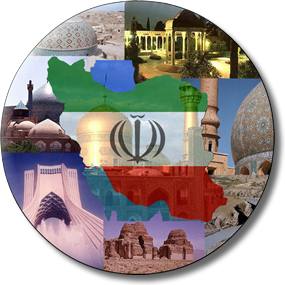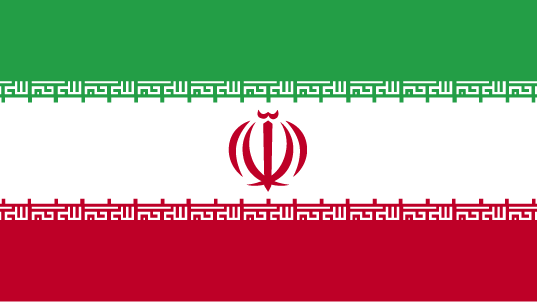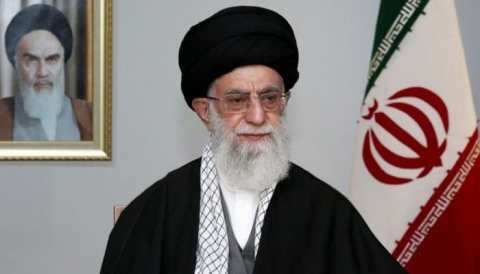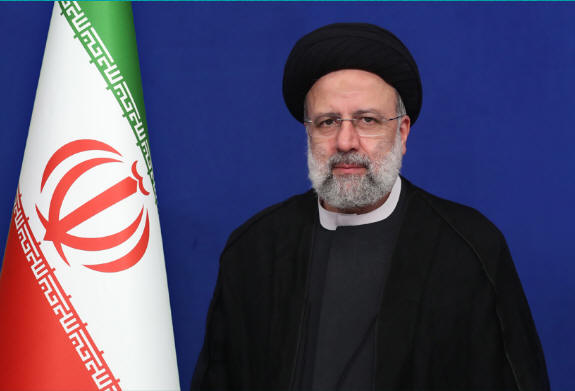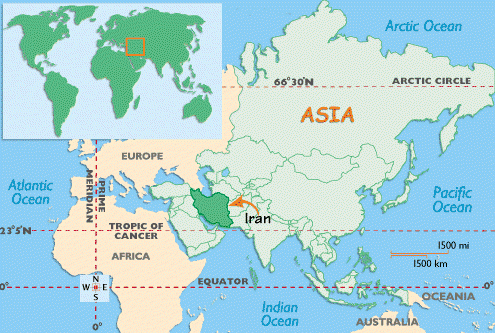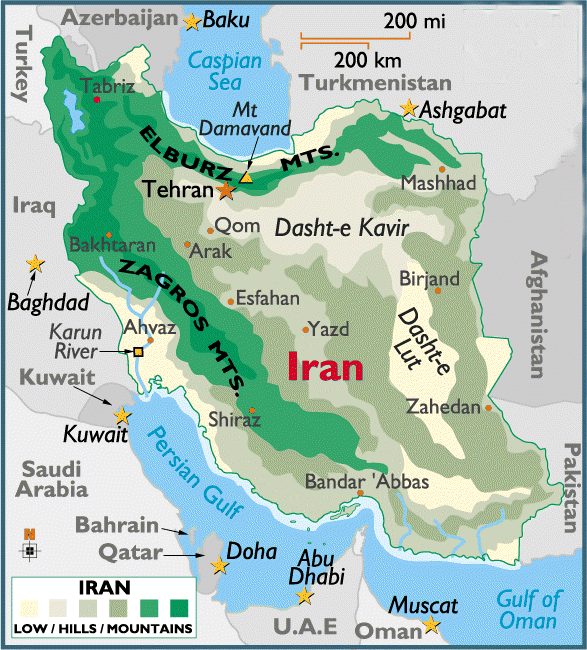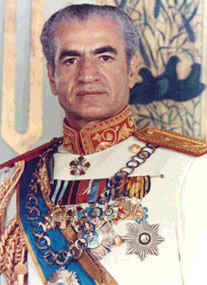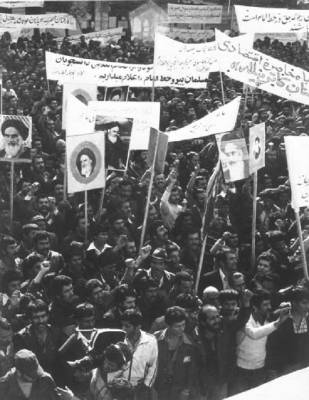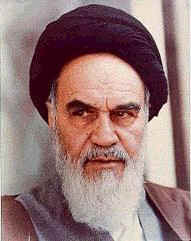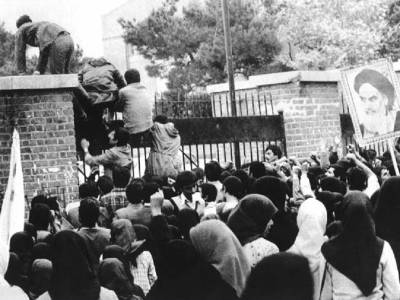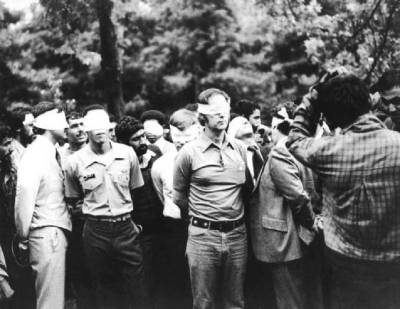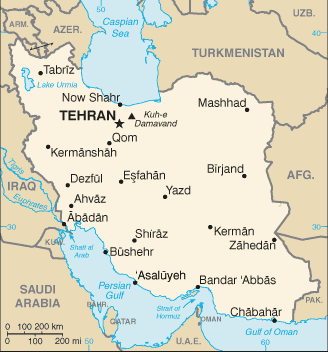
|
||||||||||||
|
|
|
Islamic Republic of Iran
Iran Timeline
Flag Description: three equal horizontal bands of green (top), white, and red; the national emblem (a stylized representation of the word Allah in the shape of a tulip, a symbol of martyrdom) in red is centered in the white band; ALLAH AKBAR (God is Great) in white Arabic script is repeated 11 times along the bottom edge of the green band and 11 times along the top edge of the red band
Ayatollah Ali Khamenei At the top of Iran's power structure is the Supreme Leader.According to Iran's Constitution, the Supreme Leader is responsible for the delineation and supervision of "the general policies of the Islamic Republic of Iran," which means that he sets the tone and direction of Iran's domestic and foreign policies. The Supreme Leader also is commander-in-chief of the armed forces and controls the Islamic Republic's intelligence and security operations; he alone can declare war or peace. He has the power to appoint and dismiss the leaders of the judiciary, the state radio and television networks, and the supreme commander of the Islamic Revolutionary Guard Corps.
Ebrahim Raisi The president is the second highest ranking official in Iran. While the president has a high public profile, however, his power is in many ways trimmed back by the constitution, which subordinates the entire executive branch to the Supreme Leader. In fact, Iran is the only state in which the executive branch does not control the armed forces. The president is responsible for setting the country's economic policies.
Iran is one of the world's oldest continuous major civilizations. The history of Iran covers thousands of years. There are records of numerous ancient and technologically advanced civilizations on the Iranian plateau before the arrival of Aryan tribes from the north, many of whom are still unknown to historians today. Archeological findings place knowledge of Persian prehistory at middle paleolithic times (100,000 years ago). The earliest sedentary cultures date from 18,000-14,000 years ago. In 6000 BCE the world saw a fairly sophisticated agricultural society and proto-urban population centers. The south-western part of Iran was part of the Fertile Crescent where most of humanity's first major crops were grown. 7000 year old jars of wine excavated in the Zagros Mountains and ruins of 7000 year old settlements such as Sialk are further testament to this. Many dynasties have ruled Persia throughout the ages. Scholars and archeologists are only beginning to discover the scope of the independent, non-Semitic Elamite Empire and Jiroft civilizations 5000 years ago. At the end of second millennium, the Aryan nomads from central Asia settled in Persia. These are some of the civilizations in Iran before the Aryans: Neolithic civilizations, Teppe Sialk, Shahr-e Sukhteh, Marlik civilization, Luristan civilization, Mannaeans civilization, Kingdom of Jiroft, Elamite kingdom. The ancient nation of Iran was historically known to the West as Persia until March 21, 1935. The name was used in the West due to the ancient Greek name for Iran, Persis. Persia is used to describe the nation of Iran, its people, or its ancient empire. The Persians have called their country Iran / Iranshahr since the Sassanian period. The name Persia comes from a region in the south of Iran, called Fars or Pars in the Persian language. Persis is the Hellenized form of Pars, based on which other European nations termed it Persia. Eratosthenes however does make mention of the word "Iran" in his writings. This region was the core of the original Persian Empire. Westerners referred to the state as Persia until March 21, 1935, when Reza Shah Pahlavi formally asked the international community to call the country by its native name, Iran, which means Land of the Aryans but because of some Persian scholars' protests the government announced in 1959 that both Persia and Iran could be used.
Iran became an Islamic republic in 1979 after the ruling monarchy was overthrown and the shah was forced into exile.
Mohammad Reza Shah There was much opposition against the Mohammad Reza Shah, and how he used the secret police, the Savak, to control the country. Strong Shi'i opposition against the Shah, and the country came close to a situation of civil war. The opposition was lead by Ayatollah Khomeini, who lived in exile in Iraq and later in France. His message was distributed through music cassettes, which were smuggled into Iran in small numbers, and then duplicated, and spread all around the country. This was the beginning of Iranian revolution. On January 16 1979, the Shah left Iran. Shapour Bakhtiar became the new prime minister with the help of Supreme Army Councils but he couldn't control the situation in the country anymore.
Iranian Rally for Ayatollah Khomeini Ayatollah Khomeini returned to Iran on February 1. Ten days later Bakhtiar went into hiding, eventually to find exile in Paris.
Ayatollah Khomeini founder of Islamic Republic Conservative clerical forces established a theocratic system of government with ultimate political authority nominally vested in a learned religious scholar.
Iranian Students scaling the wall at the U.S. Embassy Iranian-US relations have been strained since a group of Iranian students seized the US Embassy in Tehran on 4 November 1979. U.S. President Jimmy Carter immediately applied economic and diplomatic pressure on Iran: oil imports from Iran were ended on November 12, 1979, a number of Iranians in the U.S. were expelled (some of whom were unrelated to the crisis or the new Iranian government), and around USD 8 billion of Iranian assets in the U.S. were frozen on November 14, 1979. The Students held hostage 66 diplomats and citizens of the United States inside the U.S. embassy in Tehran. During the crisis, some hostages were released, but 52 were held until the end. After the presidential elections in 1980 negotiations between the U.S. and Iran resulted in the "Algiers Accords" of January 19, 1981, committing Iran to free the hostages immediately. Essential to the Algiers Accords and reportedly a non-negotiable requirement of Iran that the Carter Administration reluctantly conceded was Point I: Non-Intervention in Iranian Affairs. It reads "The United States pledges that it is and from now on will be the policy of the United States not to intervene, directly or indirectly, politically or militarily, in Iran's internal affairs." Other provisions of the Algiers Accords were the unfreezing of 8 billion dollars worth of Iranian assets and immunity from lawsuits Iran might have faced.
U.S. Hostages On January 20, 1981, twenty minutes after President Reagan's inaugural address, the hostages were formally released into U.S. custody, having spent 444 days in captivity. The hostages were flown to Algeria as a symbolic gesture for the help of that government in resolving the crisis, where former President Carter, acting as an emissary for the Reagan administration, received them.
During 1980-88, Iran fought a bloody, indecisive war with Iraq that eventually expanded into the Persian Gulf and led to clashes between US Navy and Iranian military forces between 1987-1988.
Iran has been designated a state sponsor of terrorism for its activities in Lebanon and elsewhere in the world and remains subject to US economic sanctions and export controls because of its continued involvement. Following the elections of a reformist president and Majlis in the late 1990s, attempts to foster political reform in response to popular dissatisfaction floundered as conservative politicians prevented reform measures from being enacted, increased repressive measures, and made electoral gains against reformers. Parliamentary elections in 2004 and the August 2005 inauguration of a conservative stalwart as president, completed the reconsolidation of conservative power in Iran's government.
Credit : CIA Factbook
CIA Factbook Overview Known as Persia until 1935, Iran became an Islamic republic in 1979 after the ruling monarchy was overthrown and Shah Mohammad Reza PAHLAVI was forced into exile. Conservative clerical forces led by Ayatollah Ruhollah KHOMEINI established a theocratic system of government with ultimate political authority vested in a learned religious scholar referred to commonly as the Supreme Leader who, according to the constitution, is accountable only to the Assembly of Experts (AOE) - a popularly elected 88-member body of clerics. US-Iranian relations became strained when a group of Iranian students seized the US Embassy in Tehran in November 1979 and held embassy personnel hostages until mid-January 1981. The US cut off diplomatic relations with Iran in April 1980. During the period 1980-88, Iran fought a bloody, indecisive war with Iraq that eventually expanded into the Persian Gulf and led to clashes between US Navy and Iranian military forces. Iran has been designated a state sponsor of terrorism and was subject to US, UN, and EU economic sanctions and export controls because of its continued involvement in terrorism and concerns over possible military dimensions of its nuclear program until Joint Comprehensive Plan of Action (JCPOA) Implementation Day in 2016. The US began gradually re-imposing sanctions on Iran after the US withdrawal from JCPOA in May 2018.
Following the election of reformer Hojjat ol-Eslam Mohammad KHATAMI as president in 1997 and a reformist Majles (legislature) in 2000, a campaign to foster political reform in response to popular dissatisfaction was initiated. The movement floundered as conservative politicians, supported by the Supreme Leader, unelected institutions of authority like the Council of Guardians, and the security services reversed and blocked reform measures while increasing security repression. Starting with nationwide municipal elections in 2003 and continuing through Majles elections in 2004, conservatives reestablished control over Iran's elected government institutions, which culminated with the August 2005 inauguration of hardliner Mahmud AHMADI-NEJAD as president. His controversial reelection in June 2009 sparked nationwide protests over allegations of electoral fraud, but the protests were quickly suppressed. Deteriorating economic conditions due primarily to government mismanagement and international sanctions prompted at least two major economically based protests in July and October 2012, but Iran's internal security situation remained stable. President AHMADI-NEJAD's independent streak angered regime establishment figures, including the Supreme Leader, leading to conservative opposition to his agenda for the last year of his presidency, and an alienation of his political supporters. In June 2013 Iranians elected a centrist cleric Dr. Hasan Fereidun RUHANI to the presidency. A longtime senior member in the regime, he made promises of reforming society and Iran's foreign policy. In July 2015, Iran and the five permanent members, plus Germany (P5+1) signed the JCPOA under which Iran agreed to restrictions on its nuclear program in exchange for sanctions relief; however, the US reimposed sanctions in 2018 dealing a blow to RUHANI's legacy and the Iranian economy. Negotiations to restore the deal started in 2021 and are ongoing. Iran held elections in February 2020 for the Majles and the president in June 2021, resulting in a hardline and conservative monopoly across the regime's elected and unelected institutions. President Ebrahim RAISI is a hardline cleric with a decades-long career in Iran's judiciary and has had limited foreign policy and economic experience.
Geography ::Iran Location: Geographic
coordinates: Map
references: Area: Area -
comparative: Land
boundaries: Coastline: Maritime
claims: Climate: Terrain: Elevation
extremes: Natural
resources: Land use: Irrigated
land: Total
renewable water resources: Freshwater
withdrawal (domestic/industrial/agricultural): Natural
hazards: Environment -
current issues: Environment -
international agreements: Geography -
note: Credit:CIA Fact Book ,President of Iran Website |
